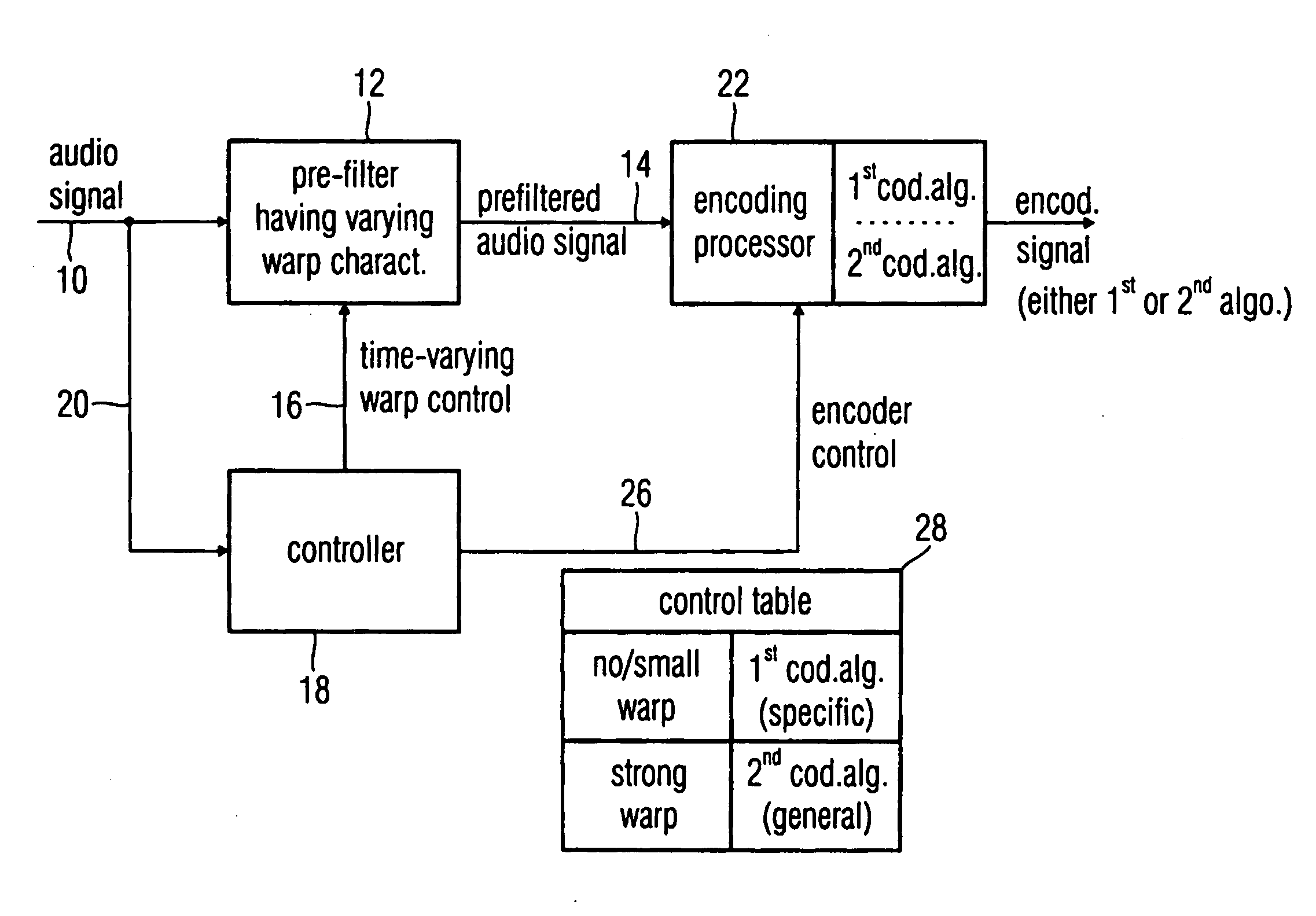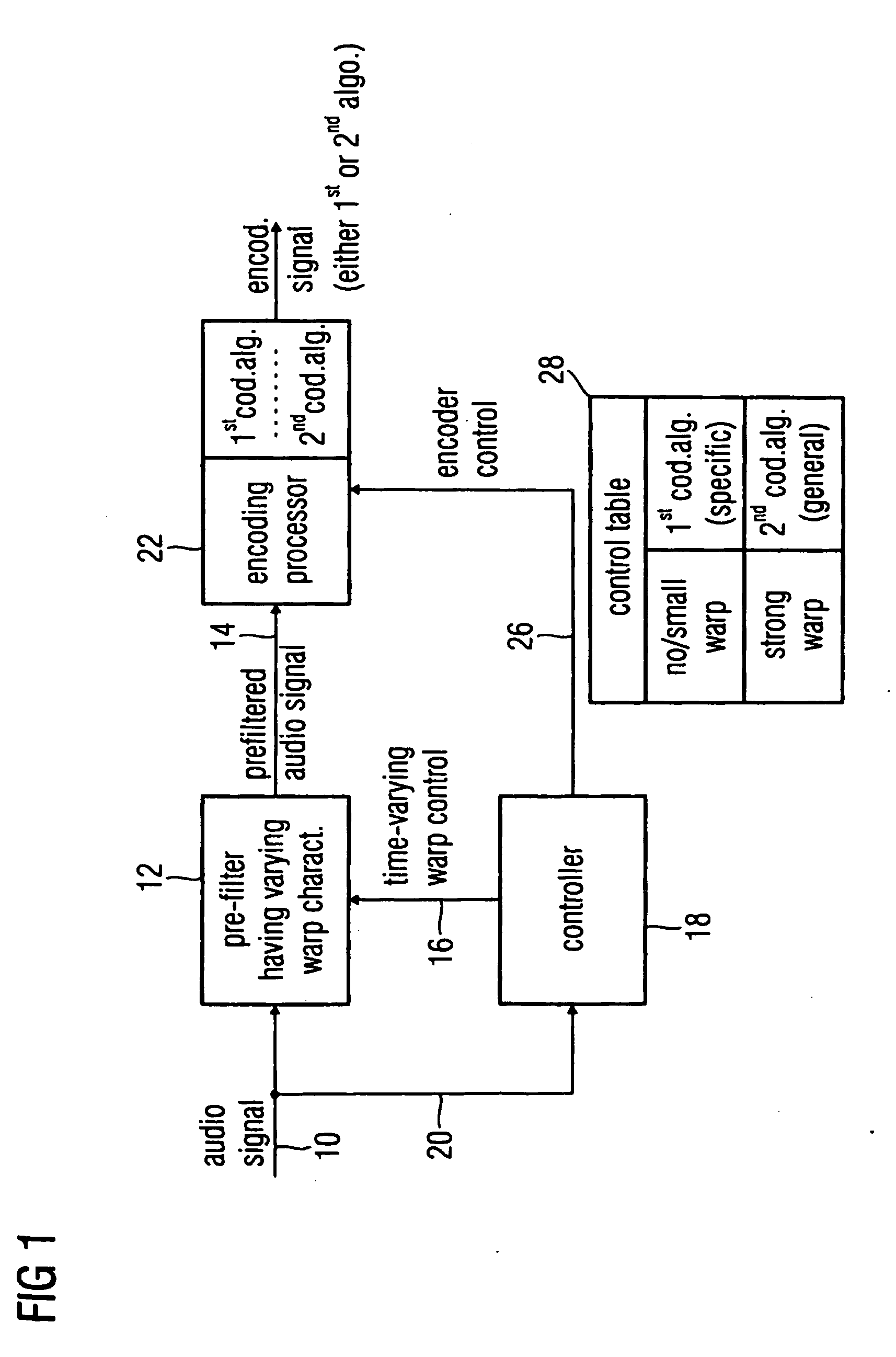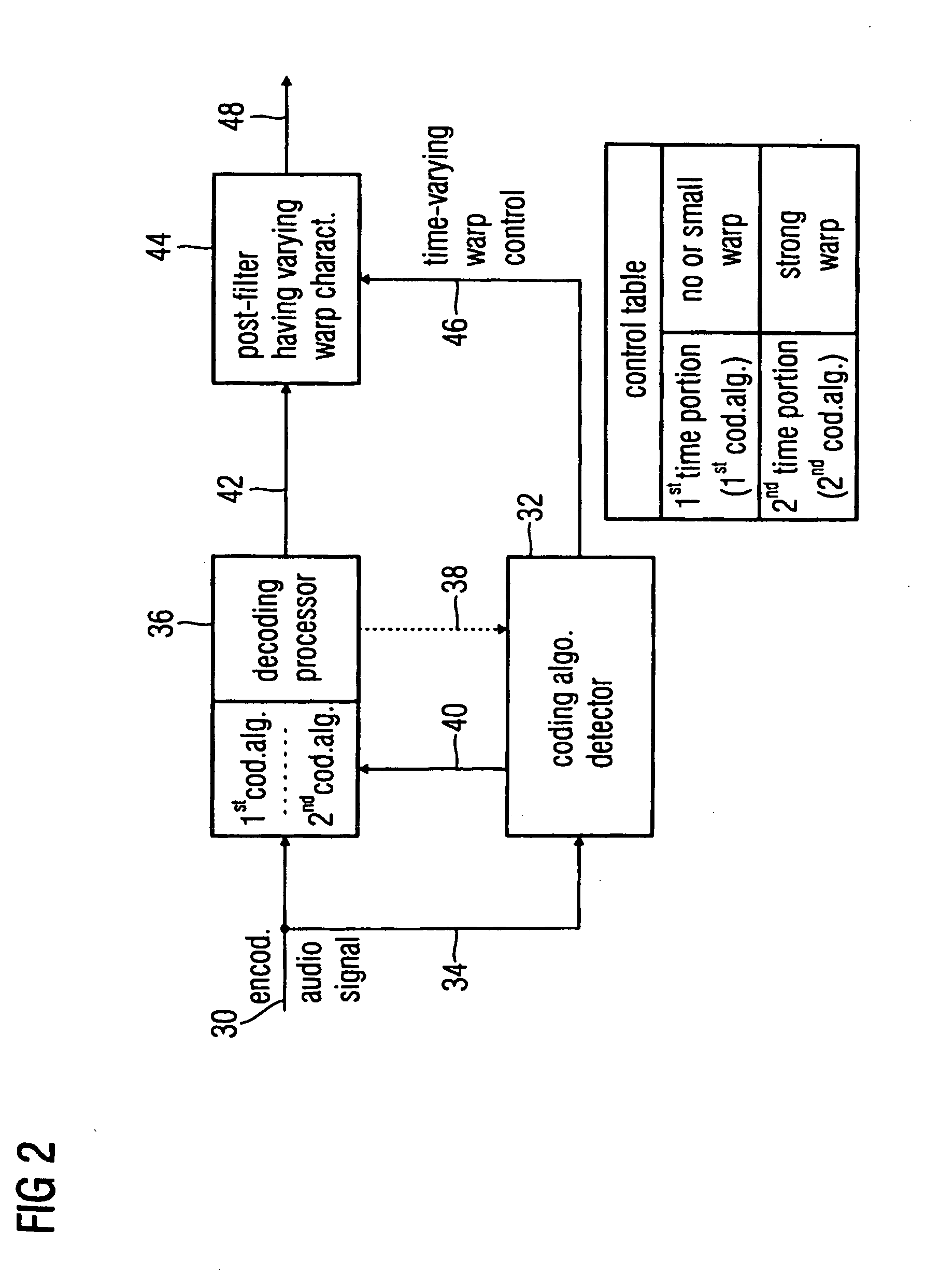Audio encoder, audio decoder and audio processor having a dynamically variable warping characteristic
a technology of dynamically variable warping characteristic and encoder, which is applied in the field of multi-purpose audio coding, can solve the problems of lpc-based speech coders that usually do not achieve convincing results when applied to general music signals, and the general audio coders that are used in mpeg-1 layer 3 or mpeg-2/4 advanced audio coding, etc., and achieves the effect of maximum irrelevance reduction and high audio quality
- Summary
- Abstract
- Description
- Claims
- Application Information
AI Technical Summary
Benefits of technology
Problems solved by technology
Method used
Image
Examples
Embodiment Construction
[0073]Preferred embodiments of the present invention provide a uniform method that allows coding of both general audio signals and speech signals with a coding performance that—at least—matches the performance of the best known coding schemes for both types of signals. It is based on the following considerations:[0074]For coding of general audio signals, it is essential to shape the coding noise spectral envelope according to a masking threshold curve (according to the idea of “perceptual audio coding”), and thus a perceptually warped frequency scale is desirable. Nonetheless, there may be certain (e.g. harmonic) audio signals where a uniform frequency resolution would perform better that a perceptually warped one because the former can better resolve their individual spectral fine structure.[0075]For the coding of speech signals, the state of the art coding performance can be achieved by means of regular (non-warped) linear prediction. There may be certain speech signals for which ...
PUM
 Login to View More
Login to View More Abstract
Description
Claims
Application Information
 Login to View More
Login to View More - R&D
- Intellectual Property
- Life Sciences
- Materials
- Tech Scout
- Unparalleled Data Quality
- Higher Quality Content
- 60% Fewer Hallucinations
Browse by: Latest US Patents, China's latest patents, Technical Efficacy Thesaurus, Application Domain, Technology Topic, Popular Technical Reports.
© 2025 PatSnap. All rights reserved.Legal|Privacy policy|Modern Slavery Act Transparency Statement|Sitemap|About US| Contact US: help@patsnap.com



